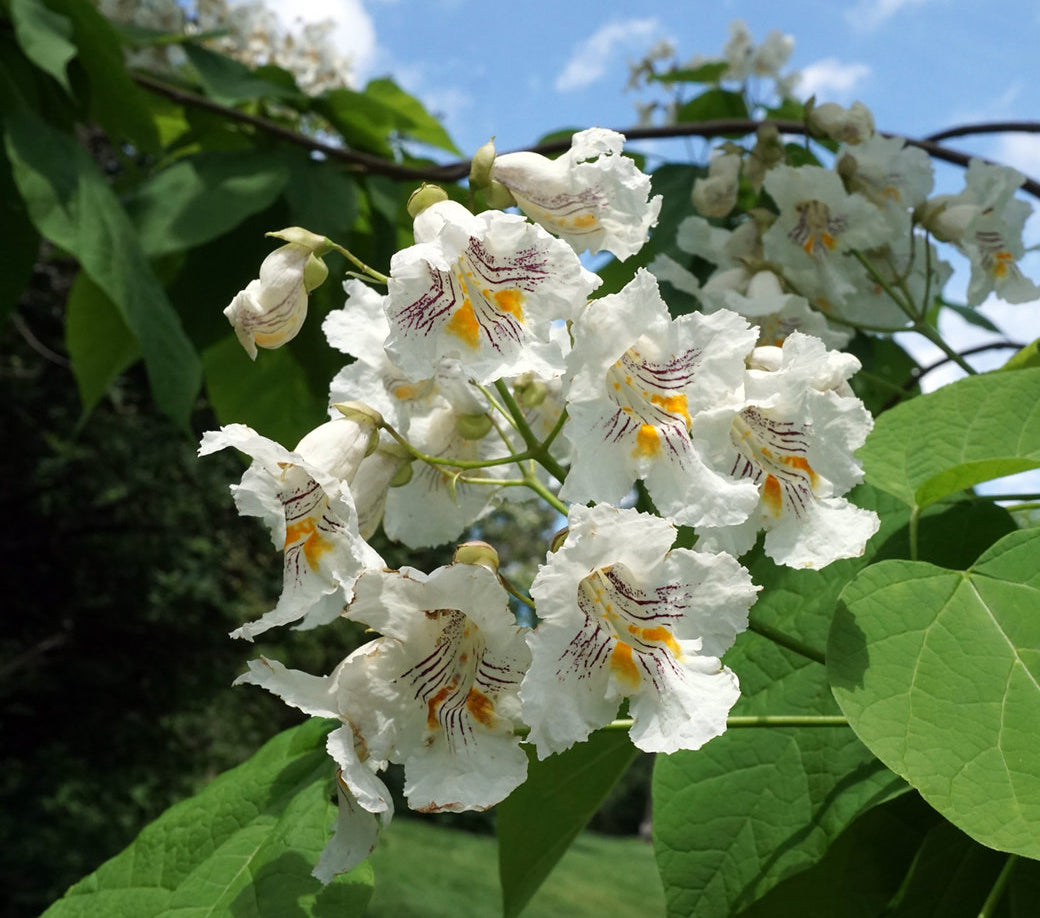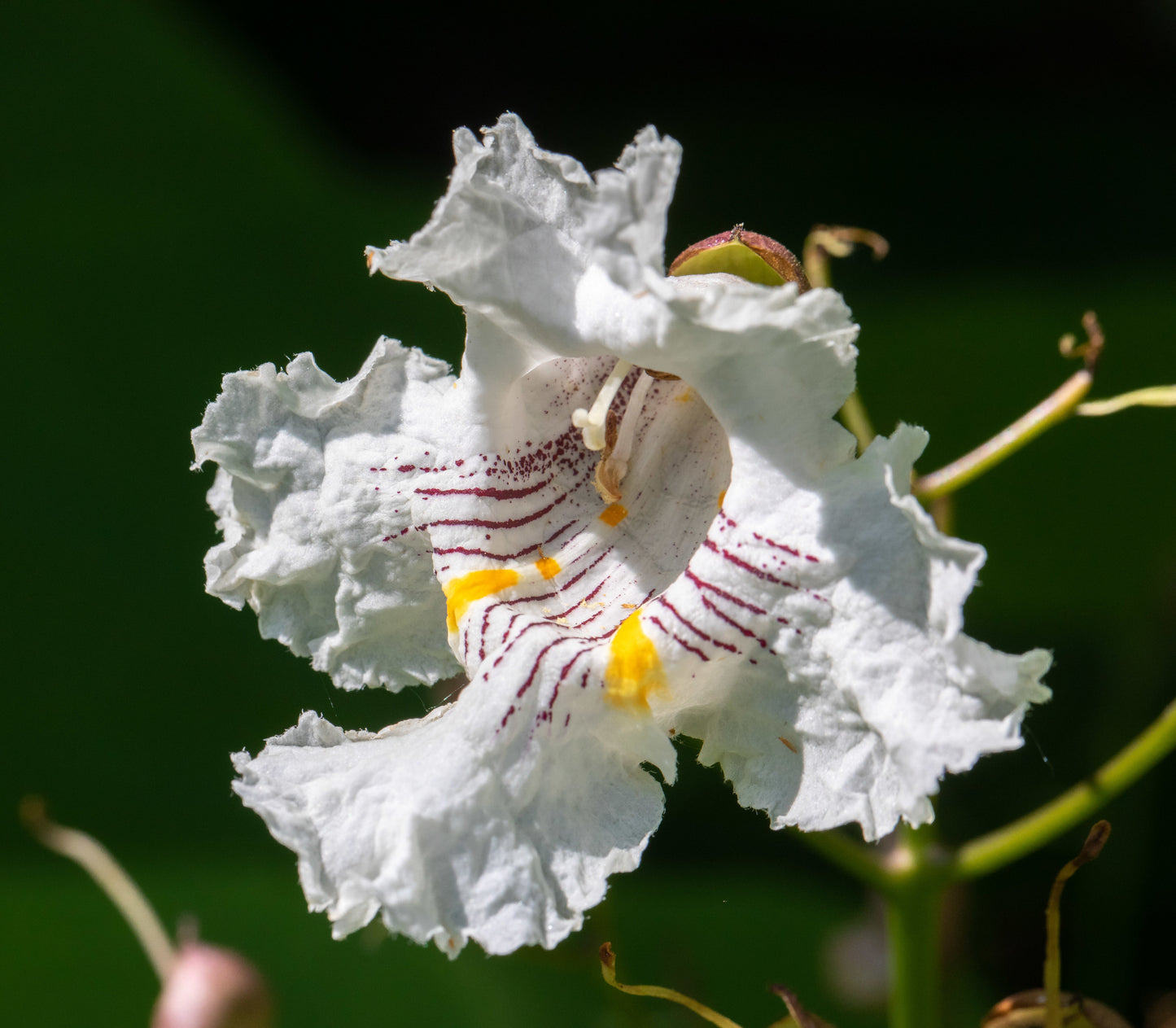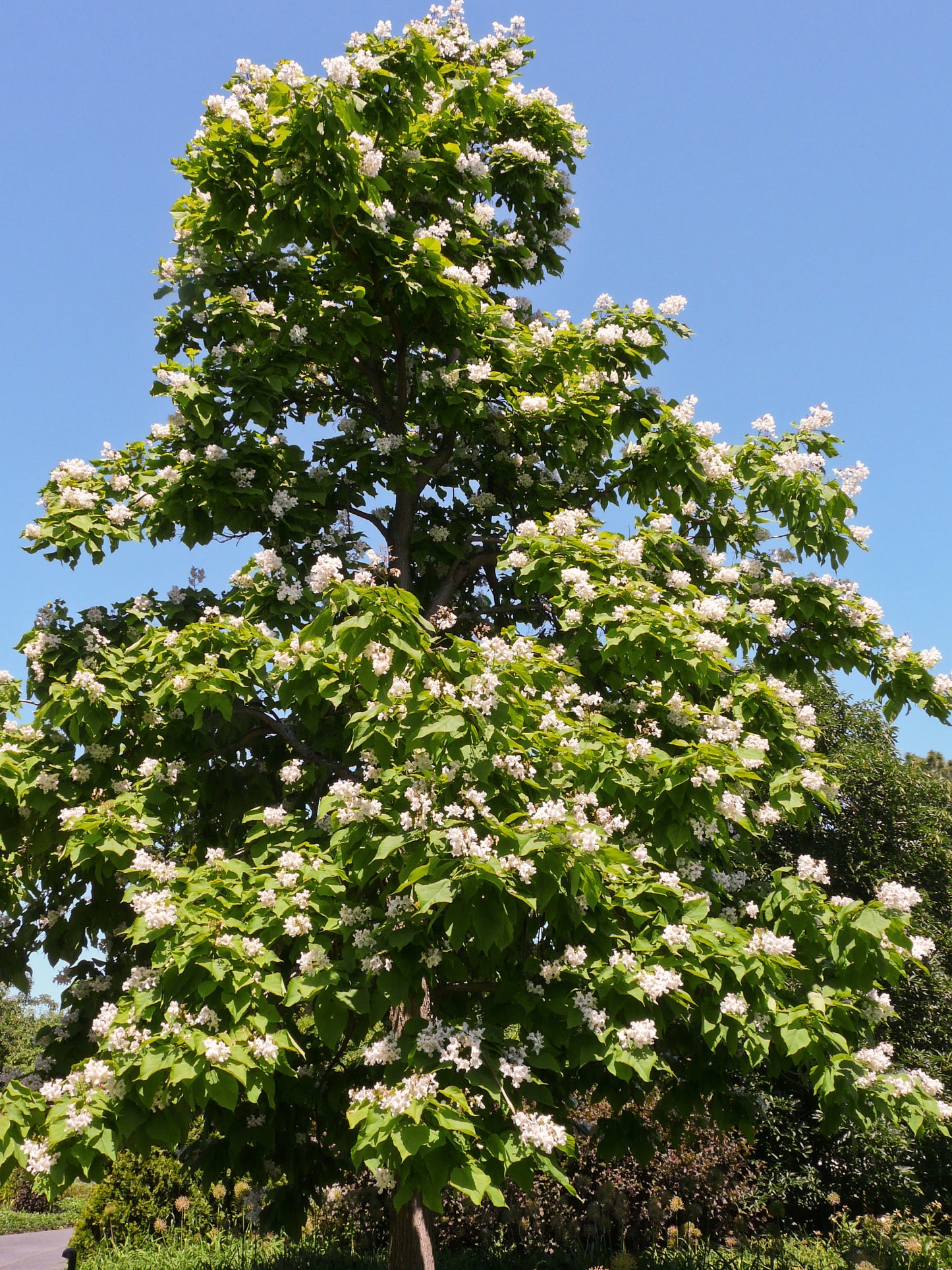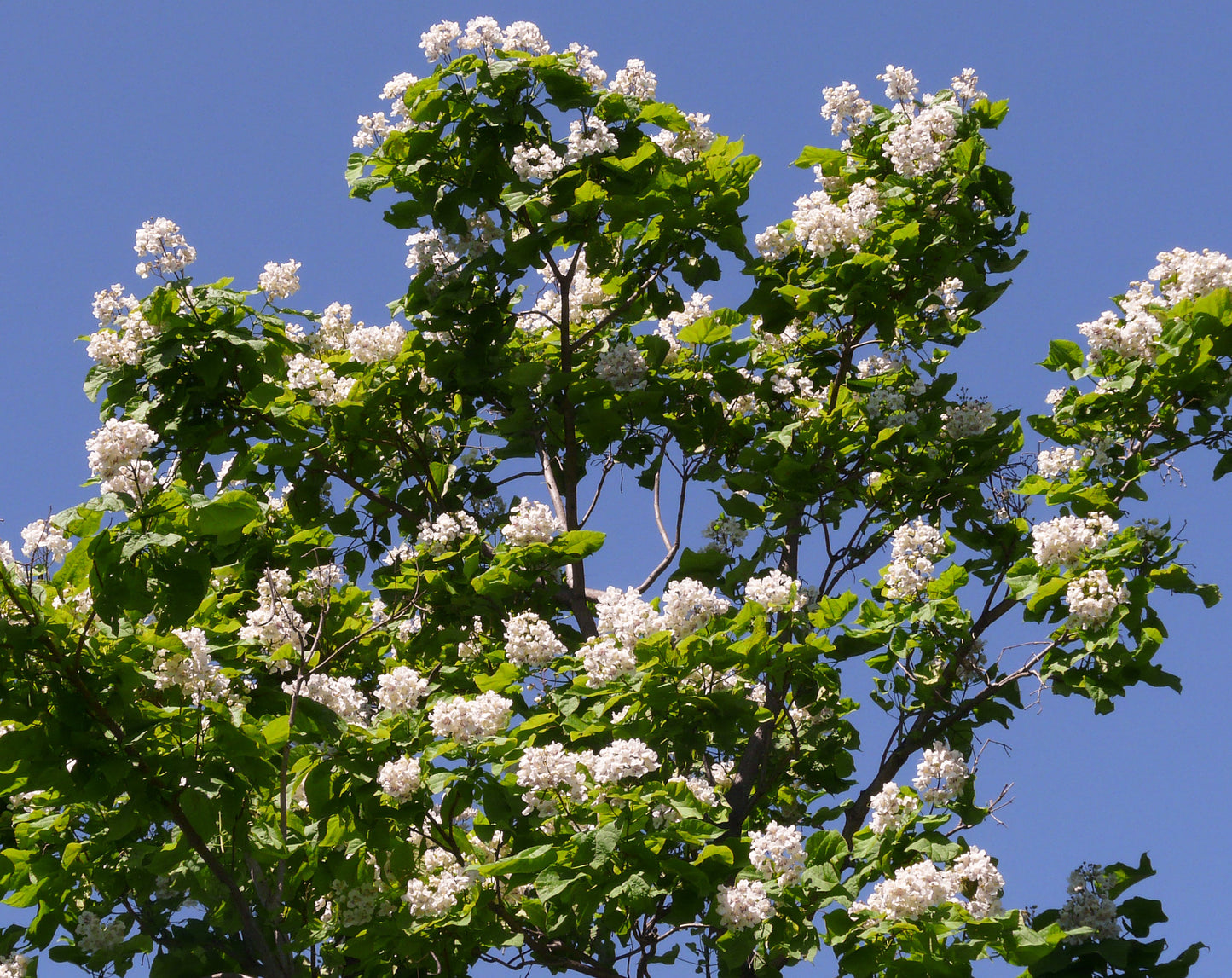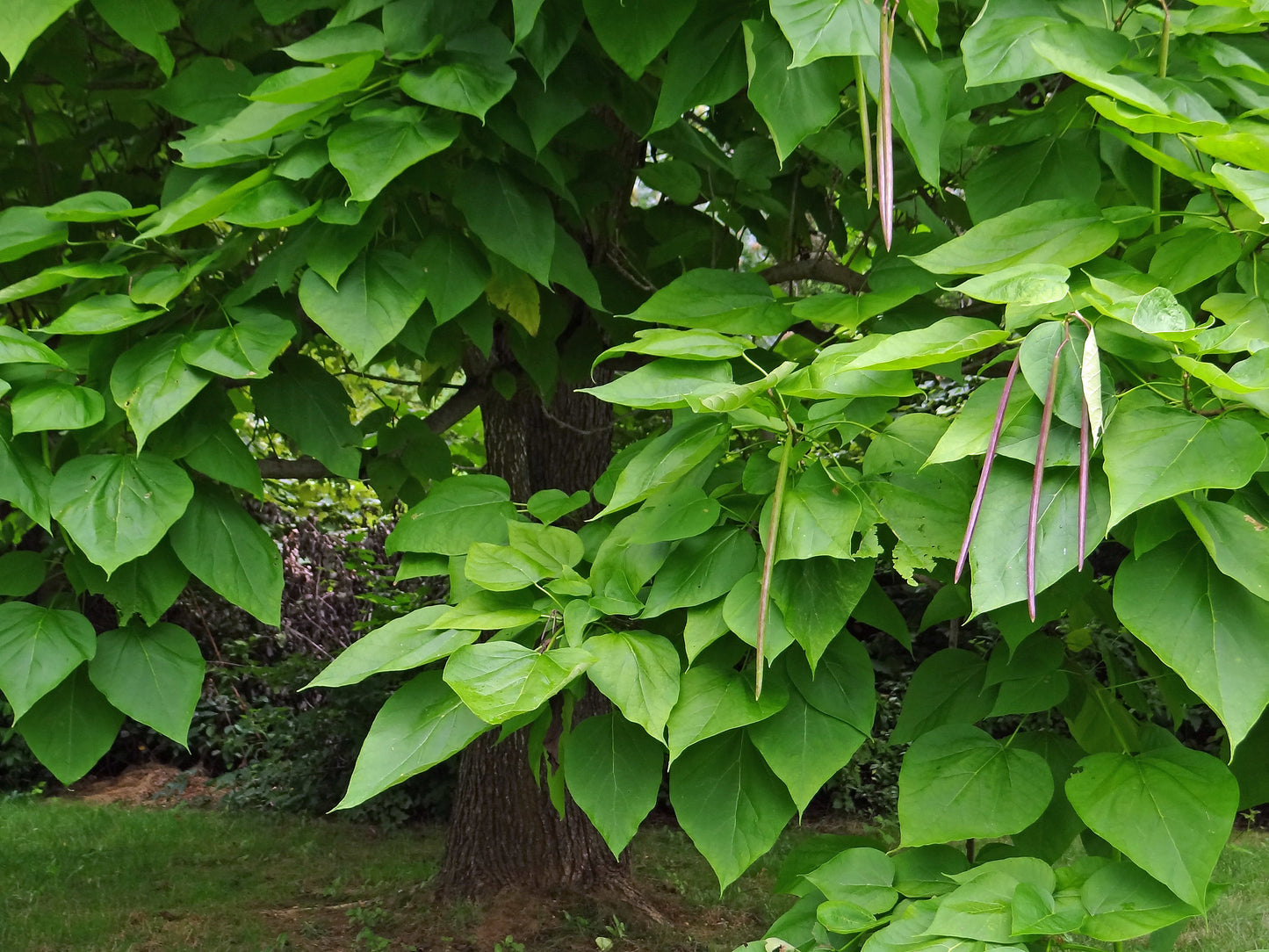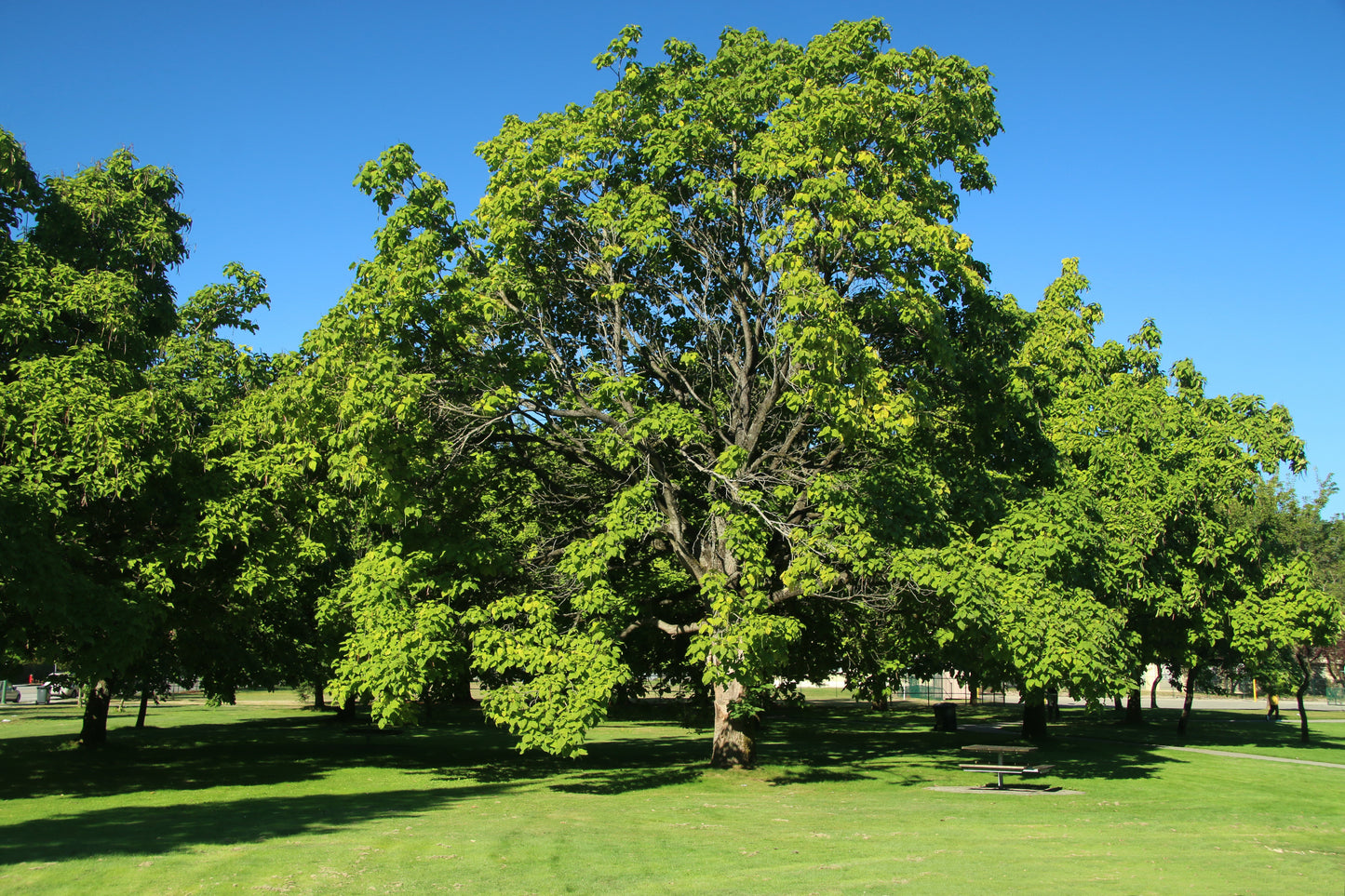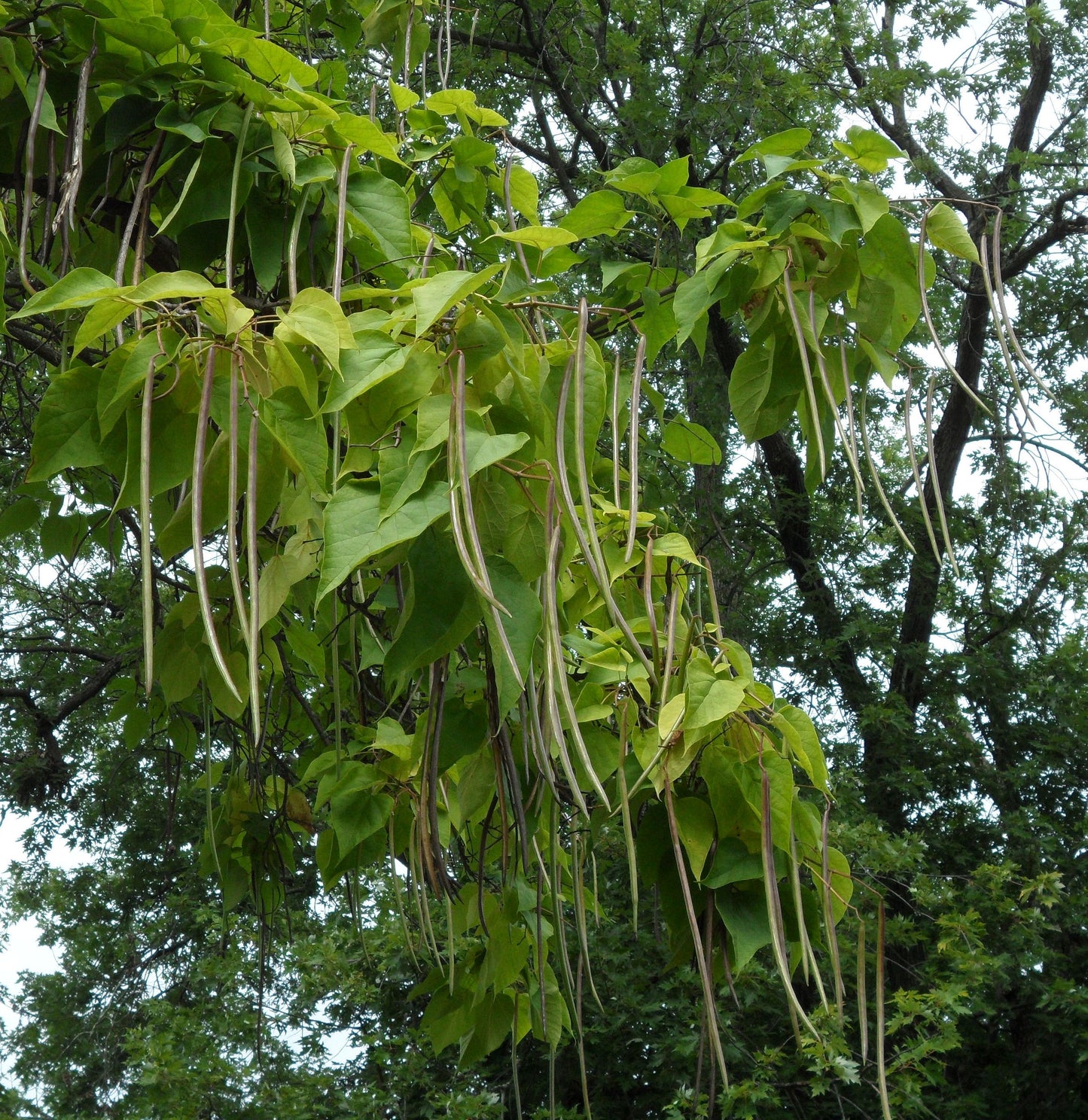Floridaseeds
Northern Catalpa Catalpa speciosa 100 Seeds USA Company
Northern Catalpa Catalpa speciosa 100 Seeds USA Company
Couldn't load pickup availability
Catalpa speciosa, commonly known as the Northern catalpa or the Western catalpa, is a deciduous tree native to the central United States. It belongs to the Bignoniaceae family. Here's a description of the tree:
Appearance: Catalpa speciosa typically grows to a height of 50-80 feet (15-24 meters) with a spread of about 20-40 feet (6-12 meters). It has a broad, irregularly rounded crown and a straight trunk.
Leaves: The leaves are large, heart-shaped, and typically measure 6-12 inches (15-30 cm) in length. They are arranged oppositely along the branches and have a coarse texture. The foliage is dark green in summer and turns yellow in autumn before dropping.
Flowers: One of the most distinctive features of Catalpa speciosa is its showy, fragrant flowers. These trumpet-shaped flowers appear in late spring to early summer, usually in May or June, depending on the location. They are white with purple and yellow markings and are borne in large, upright clusters known as panicles. The flowers attract bees, butterflies, and hummingbirds.
Fruit: After flowering, Catalpa speciosa produces long, slender seed pods that can reach up to 20 inches (50 cm) in length. These pods hang persistently on the tree throughout the winter. Each pod contains numerous small, winged seeds.
Bark: The bark of Catalpa speciosa is dark brown to grayish-brown and deeply furrowed, forming ridges and scales as it matures.
Habitat: This tree is commonly found growing in a variety of habitats, including riverbanks, floodplains, and bottomlands. It prefers moist, well-drained soils but can tolerate a range of soil types and pH levels.
Uses: Catalpa speciosa is cultivated as an ornamental tree for its attractive flowers and unique appearance. It is also valued for its relatively fast growth rate, making it a popular choice for shade and landscaping. Additionally, the wood of Catalpa trees is lightweight, durable, and resistant to rot, making it suitable for use in fence posts, railroad ties, and other outdoor applications. Hardy in zones 4-8.
Growing Instructions for the Northern Catalpa
The seeds have a period of dormancy. They can be planted in the fall for spring germination or they can be cold stratified to simulate winter conditions and to break their dormancy. The seeds are stored in a refrigerator so they have already been stratified. 1. Place the seeds in a plastic bag and seal it. Store the bag in a refrigerator for 3 weeks. 2. Fill a pot with a mixture of potting soil and sand, peat moss or vermiculite. The seeds need moist, well-drained soil. Use pots that have drainage holes in the bottom. 3. Sow the seeds on the soil and cover them with a thin layer of soil. 4. Water the container and leave it to drain. 5. Put the pot in a warm, sunny area. 6. Water the pot regularly so that the soil is moist but not wet. 7. The seedlings can be transplanted when they are a few inches tall.
Materials
Materials
Shipping & Returns
Shipping & Returns
Dimensions
Dimensions
Care Instructions
Care Instructions
Share

